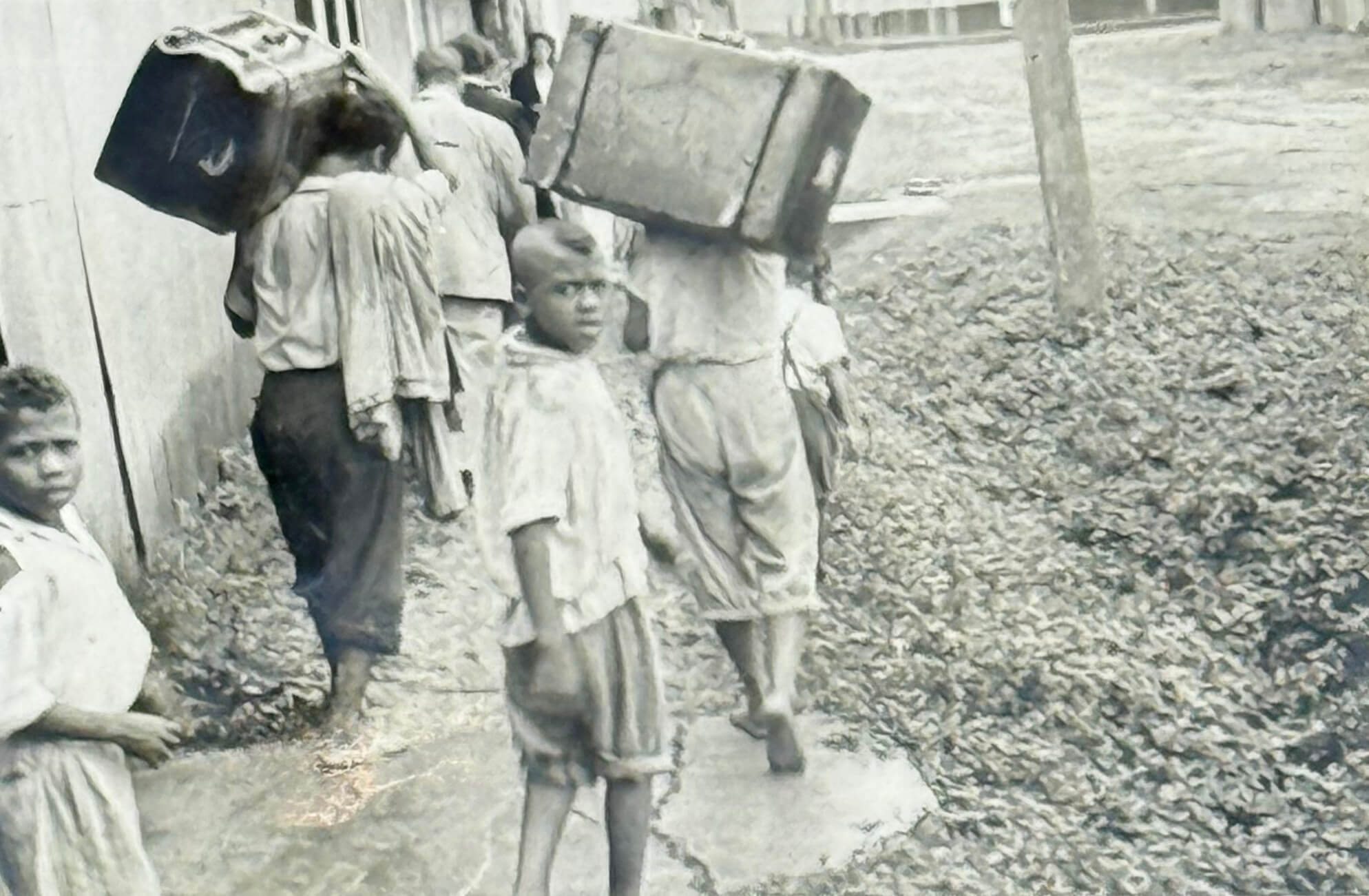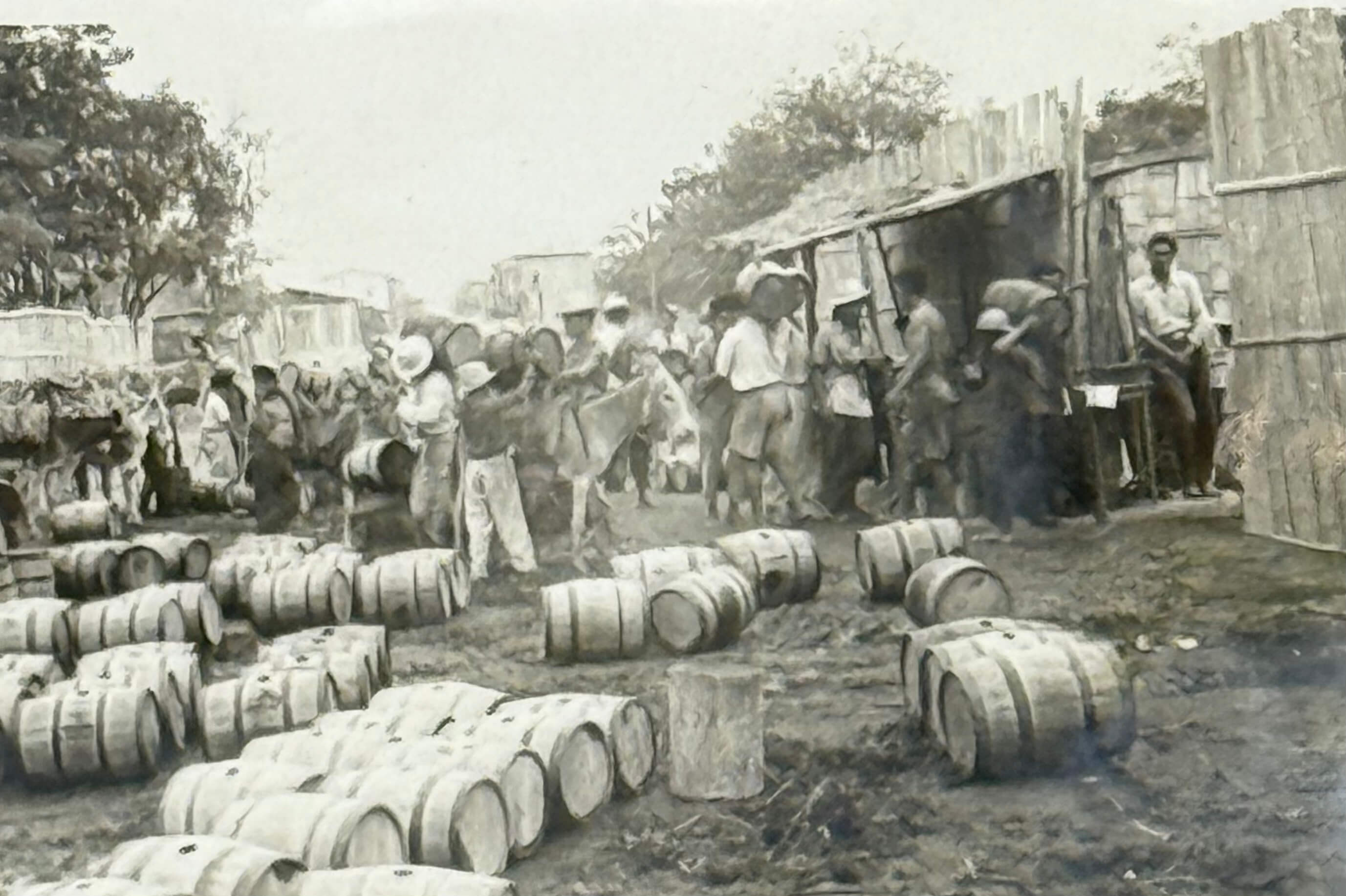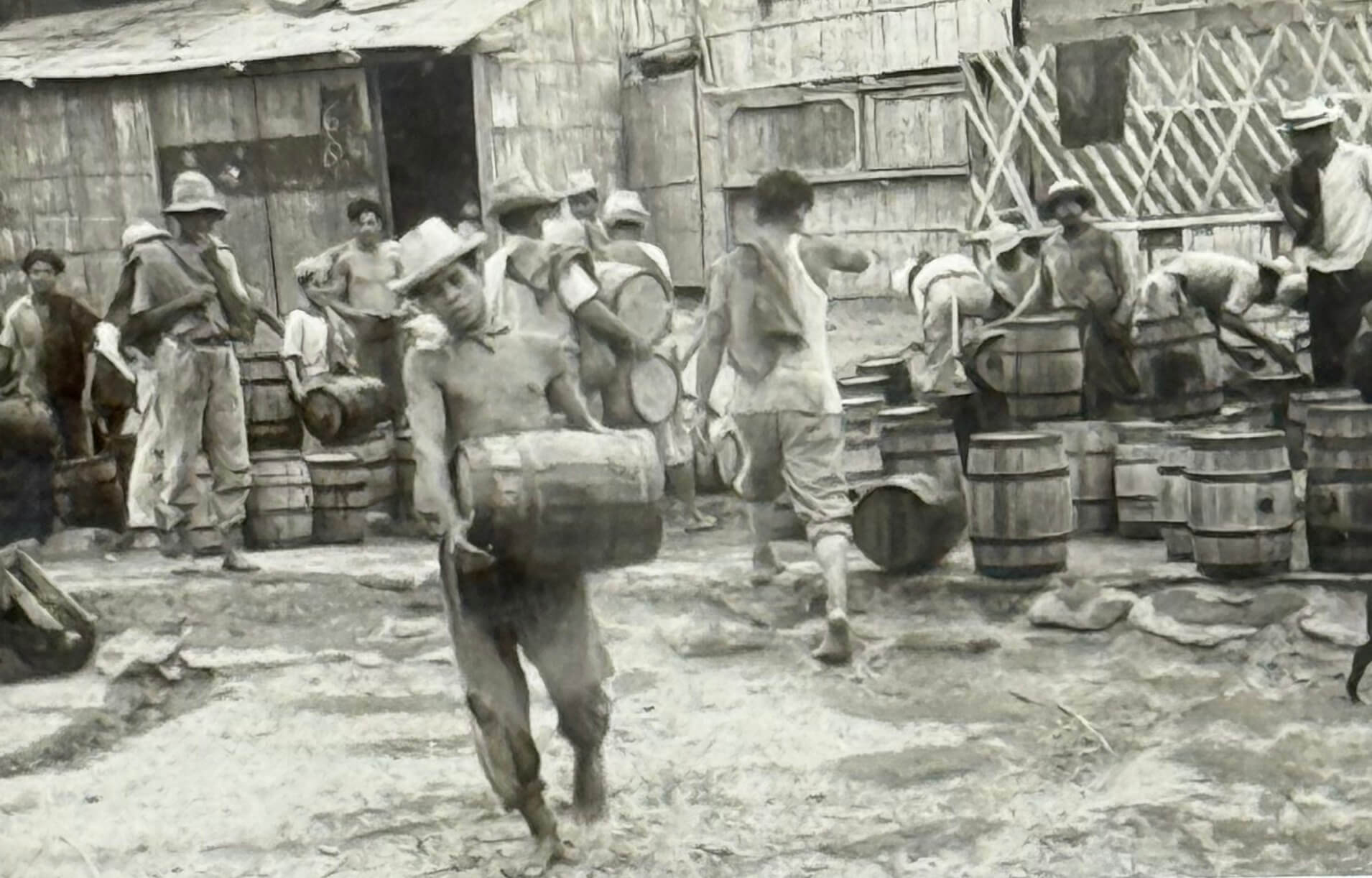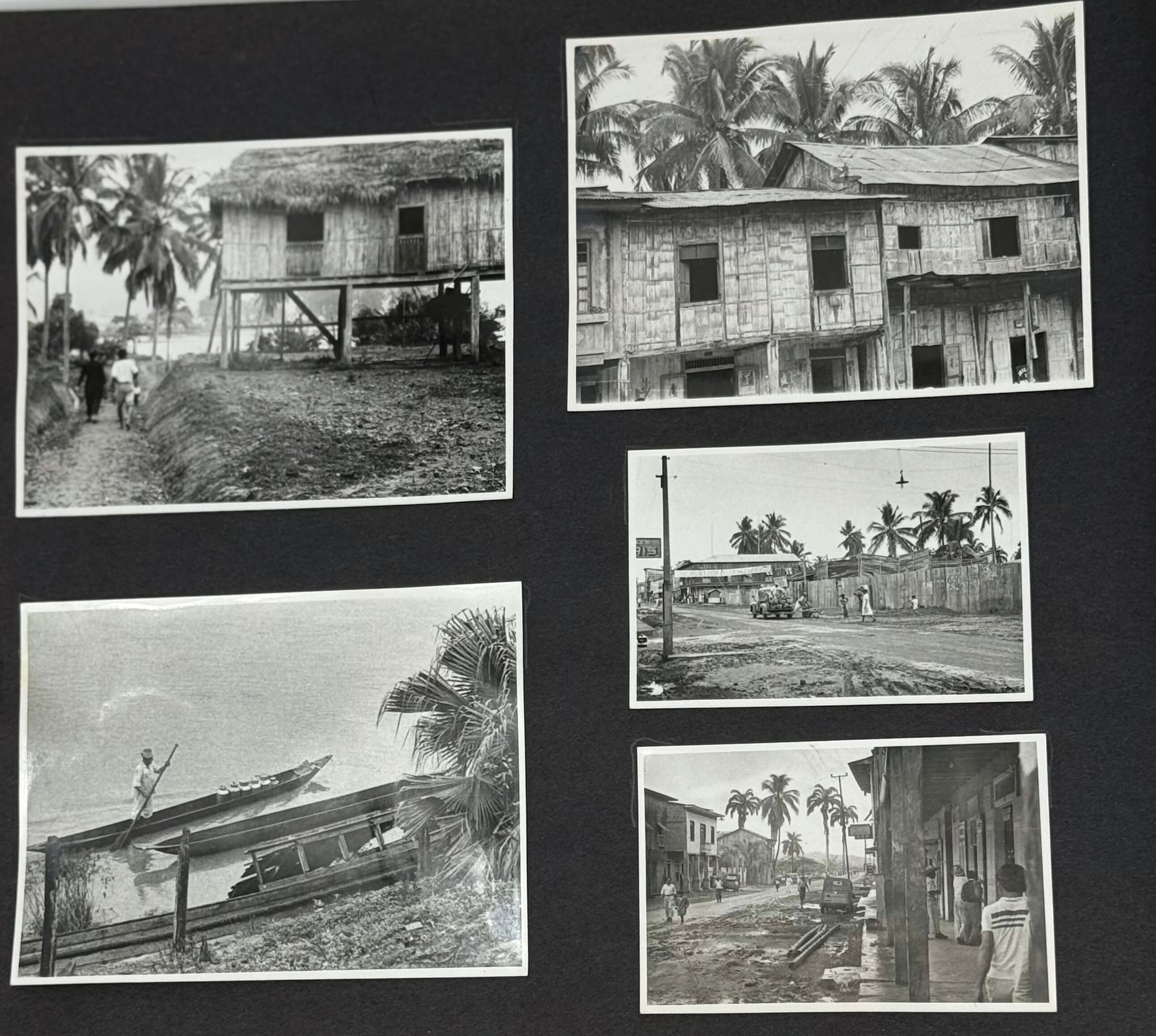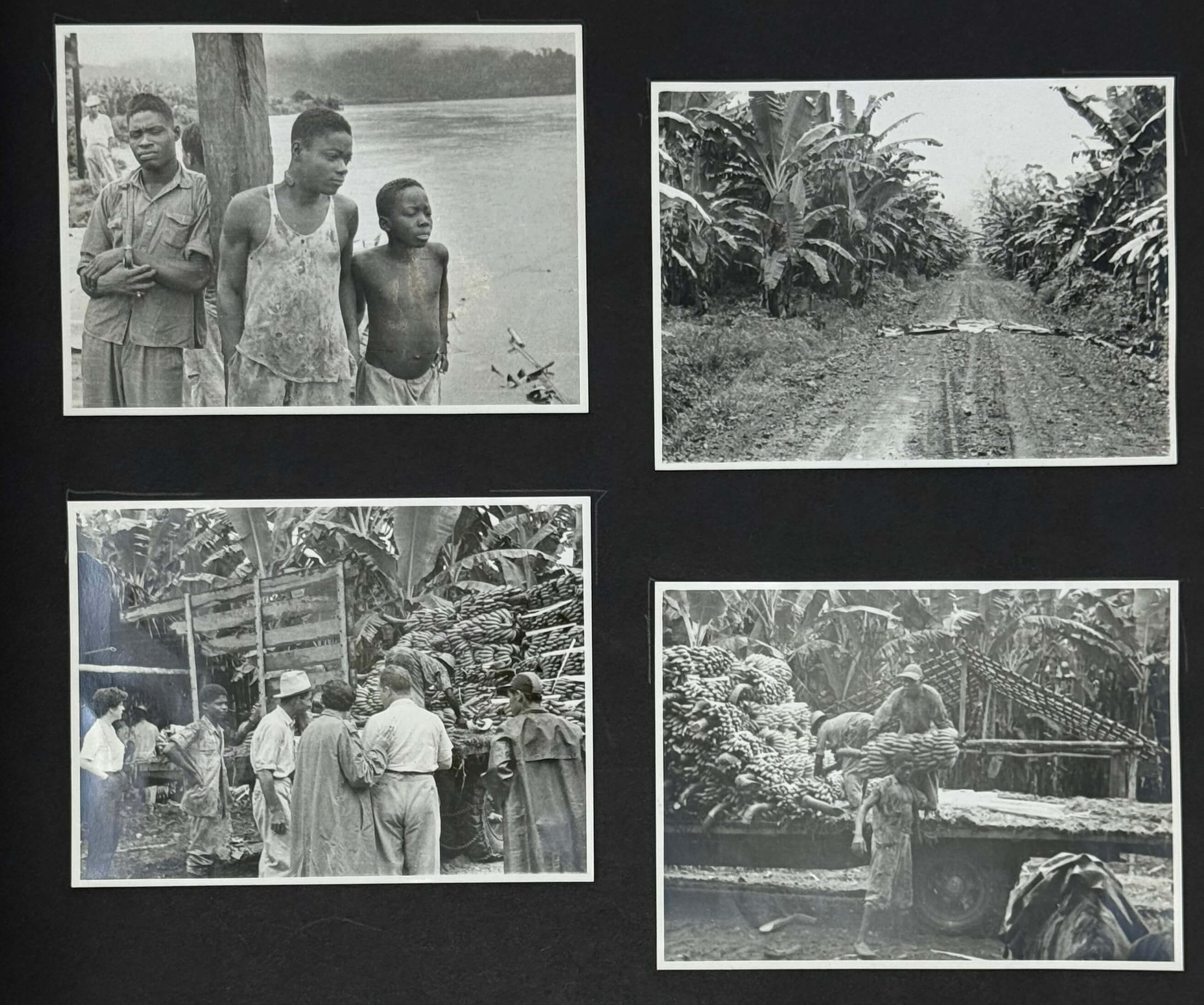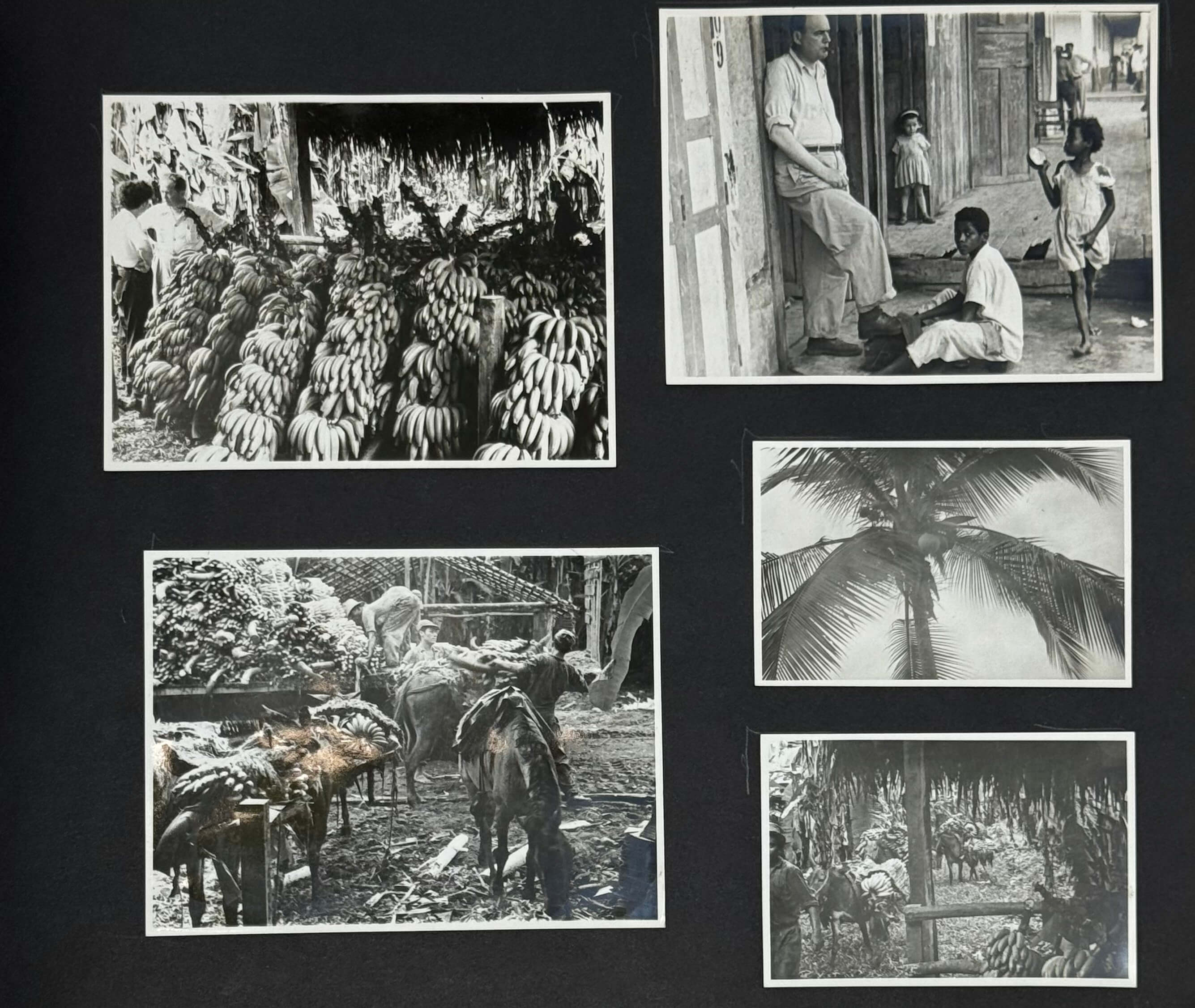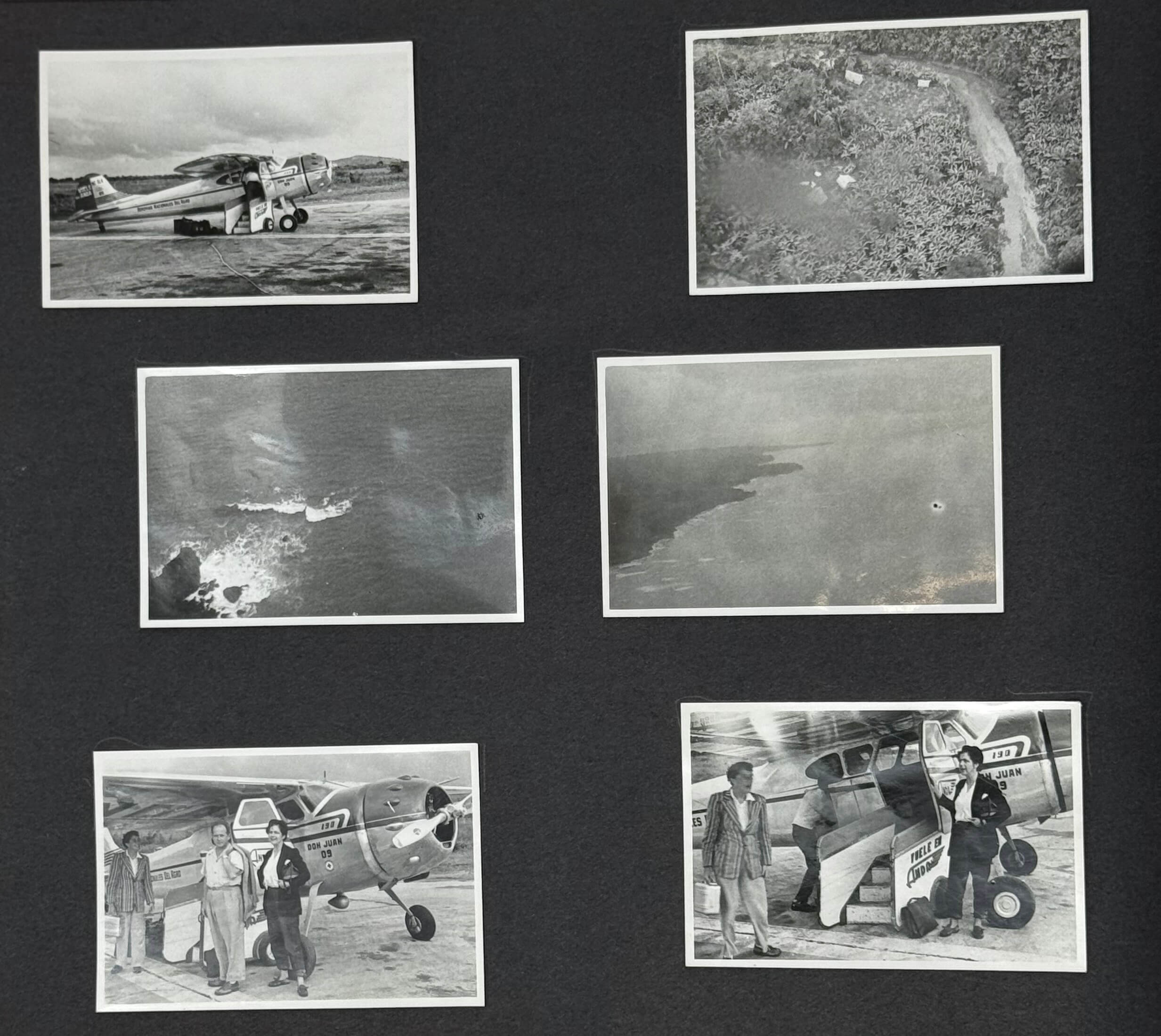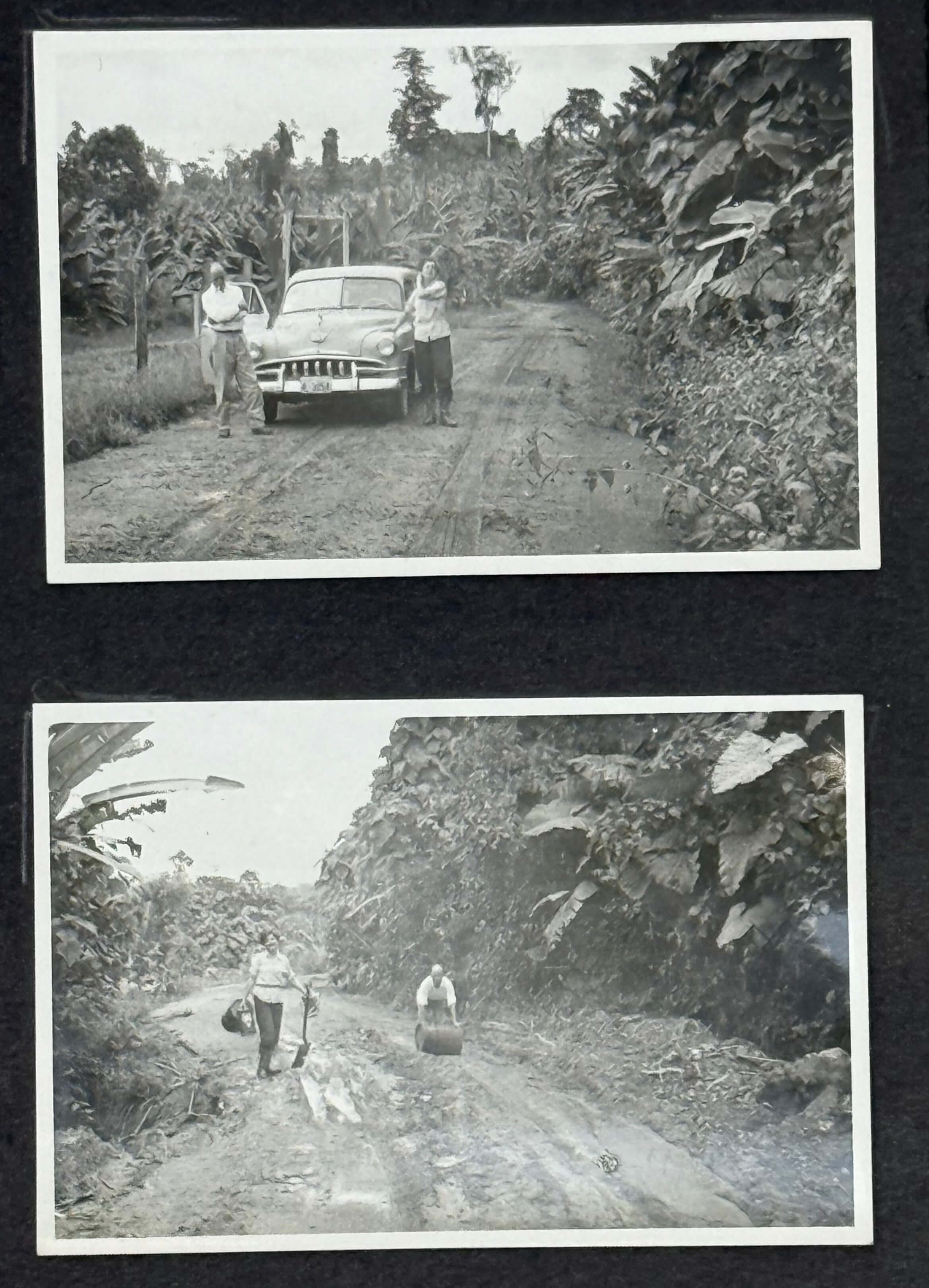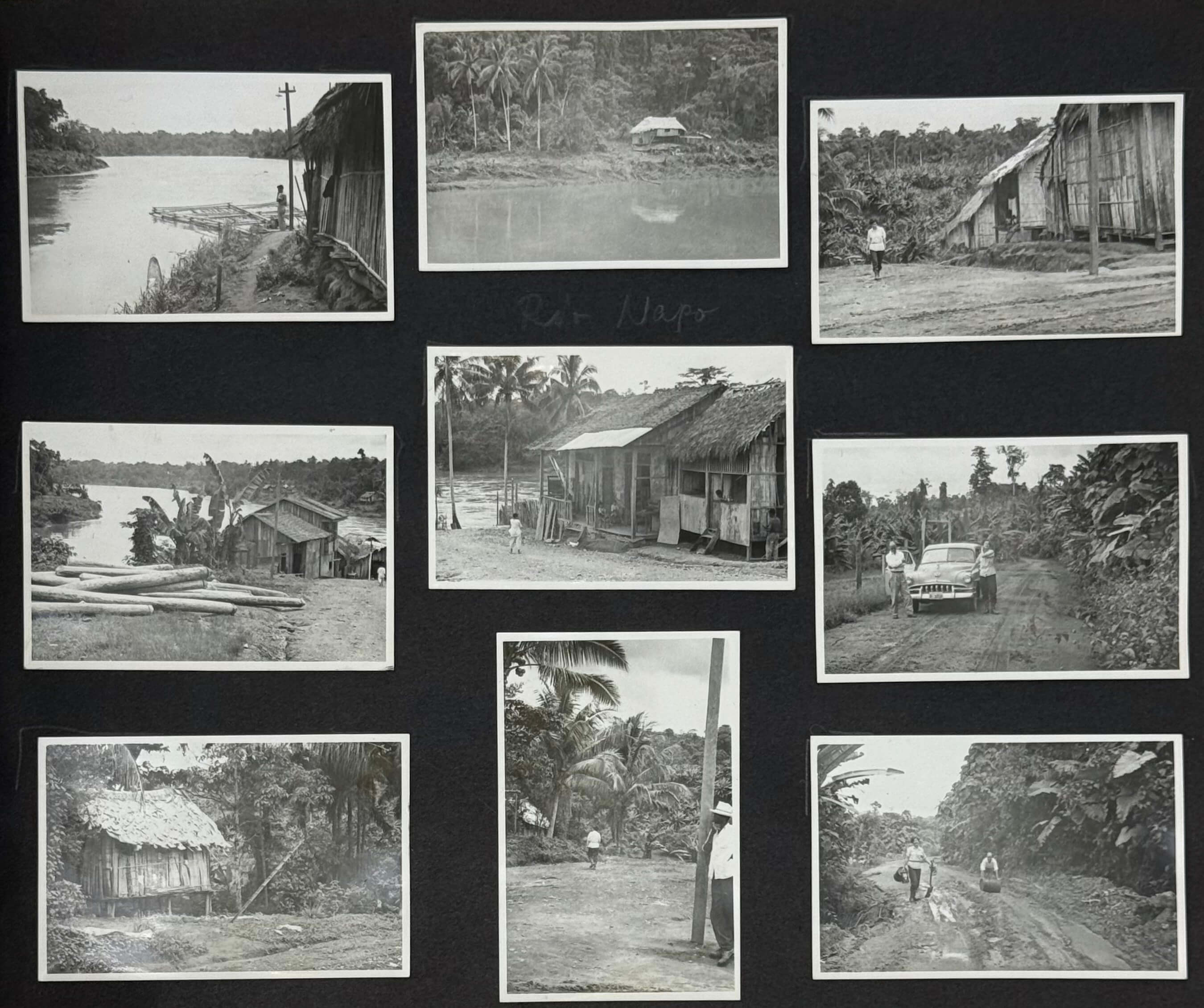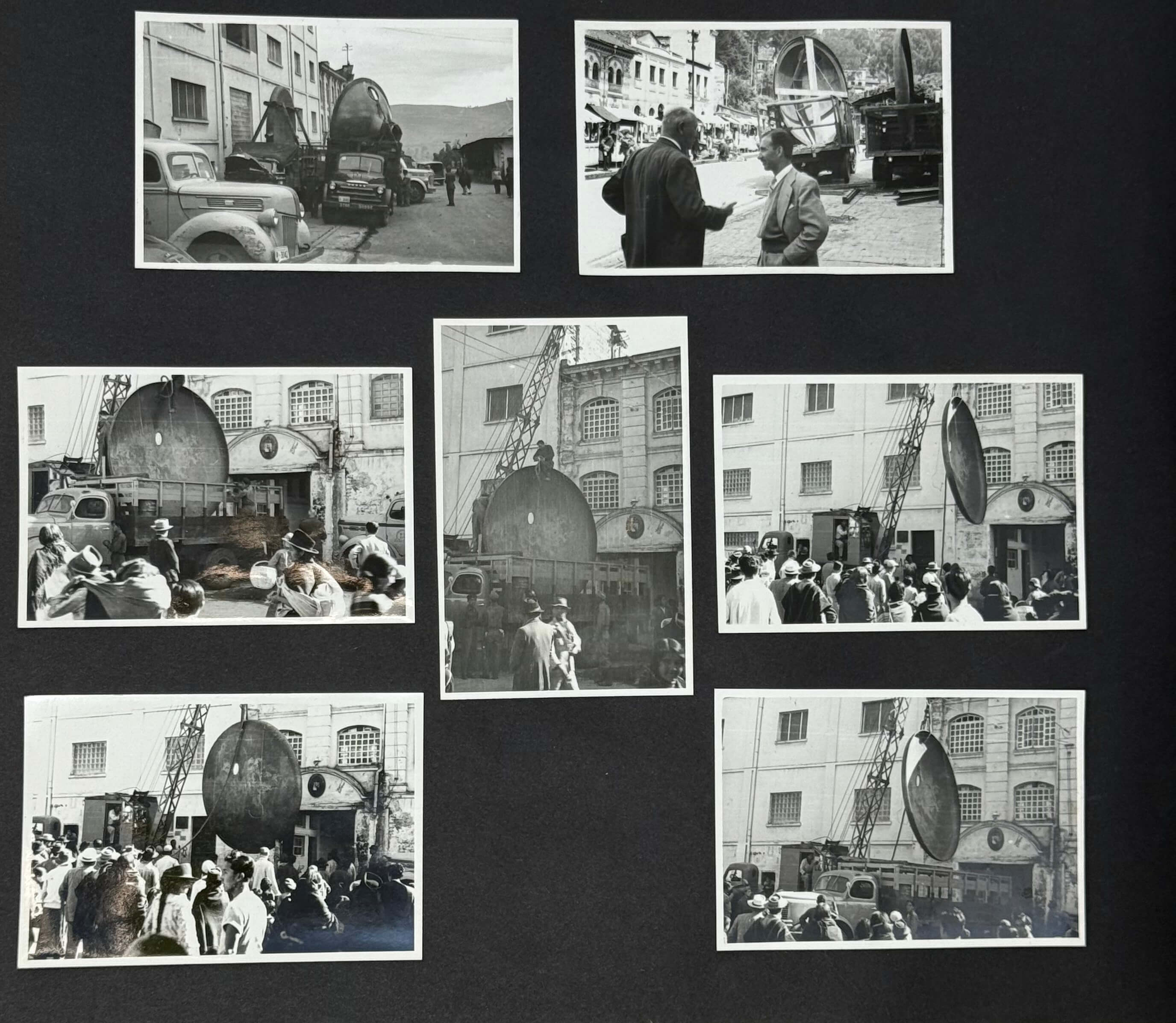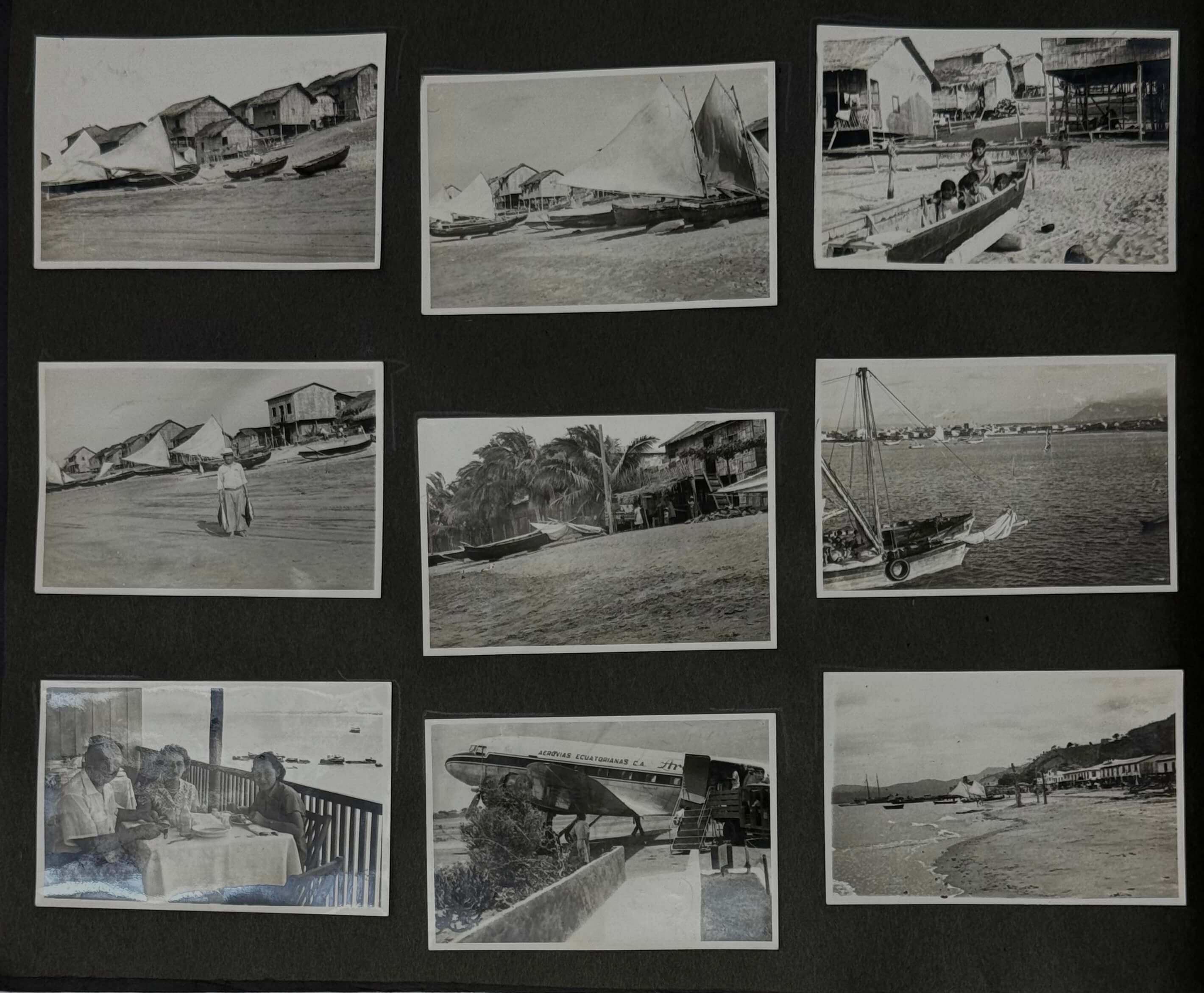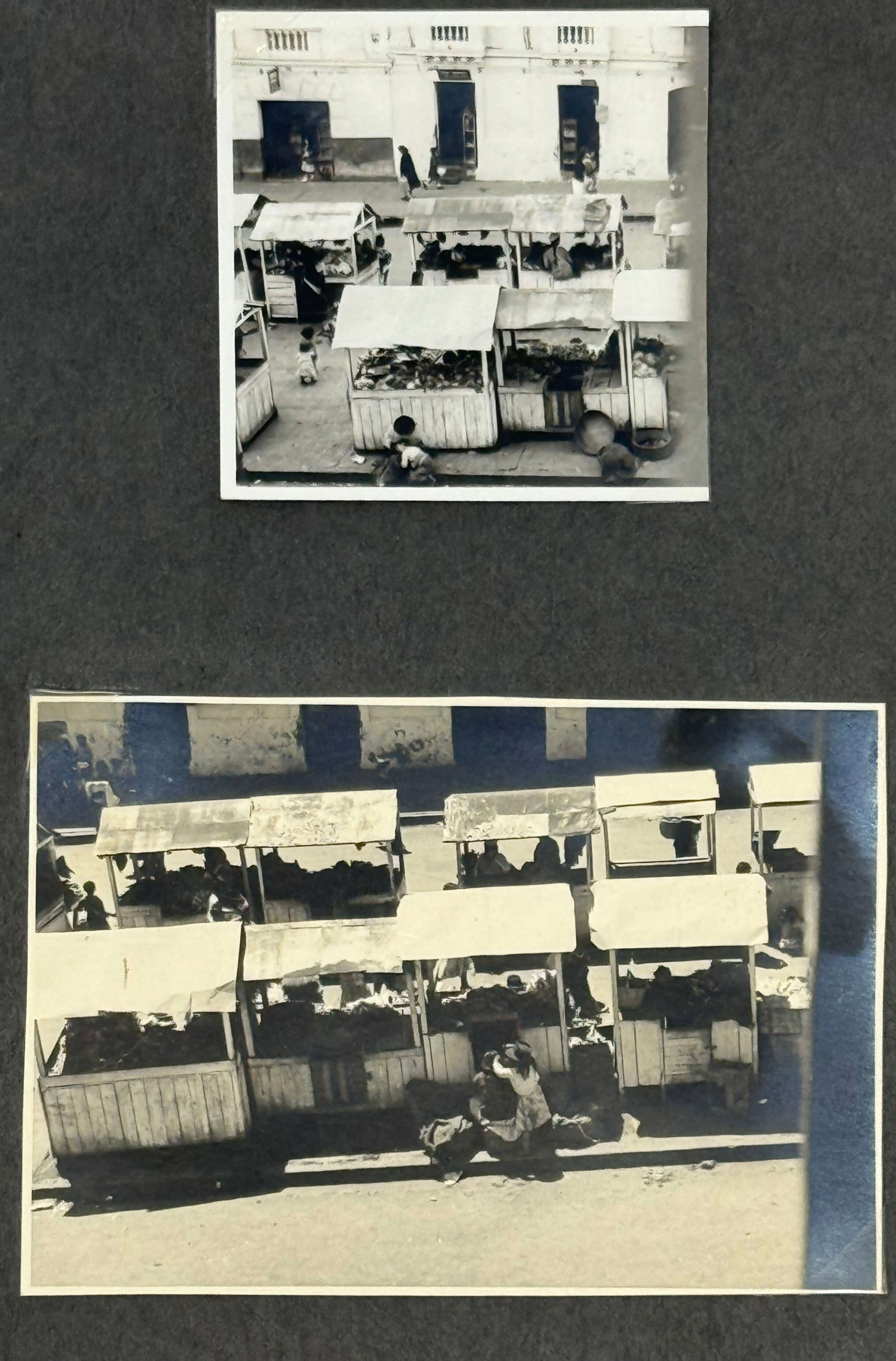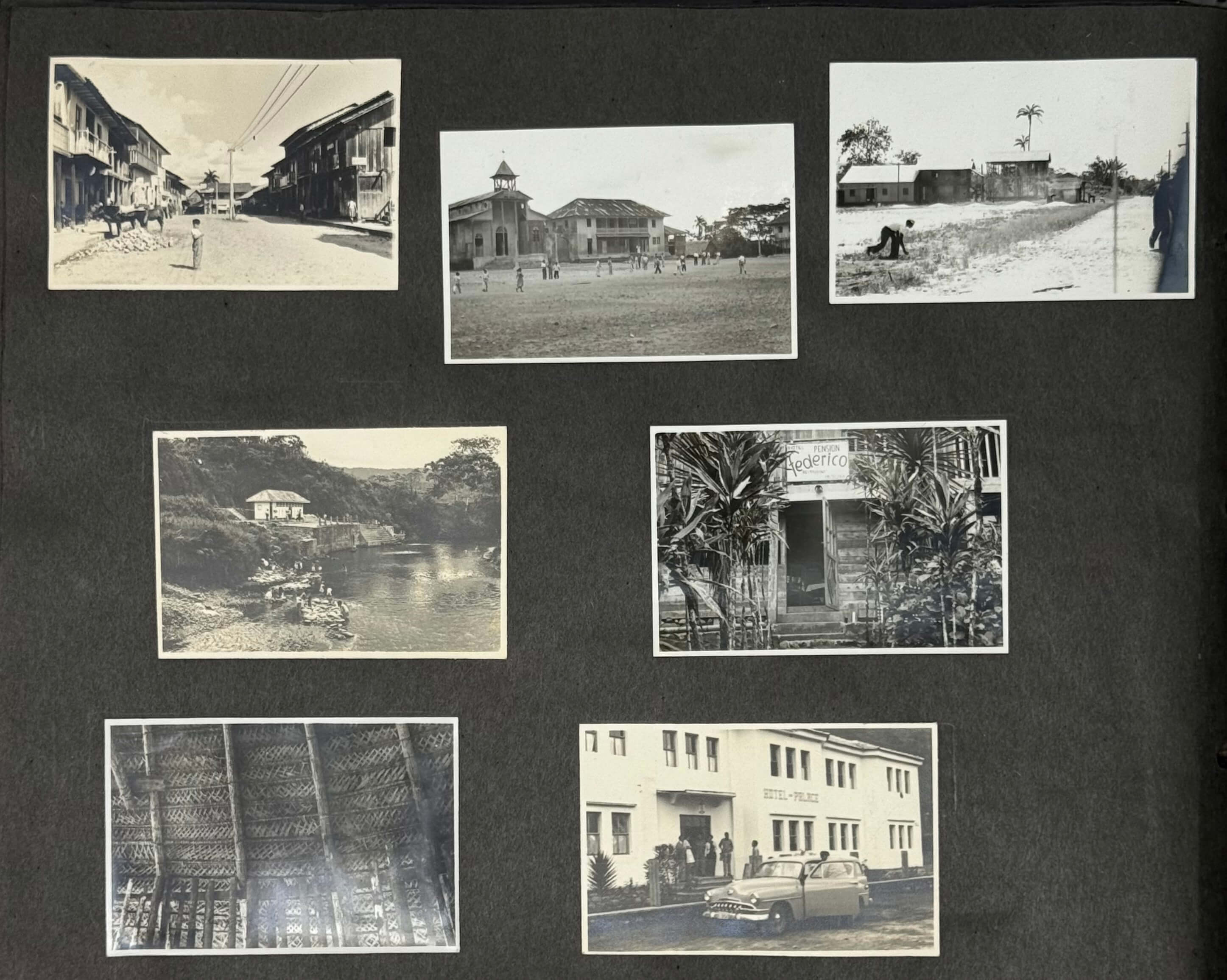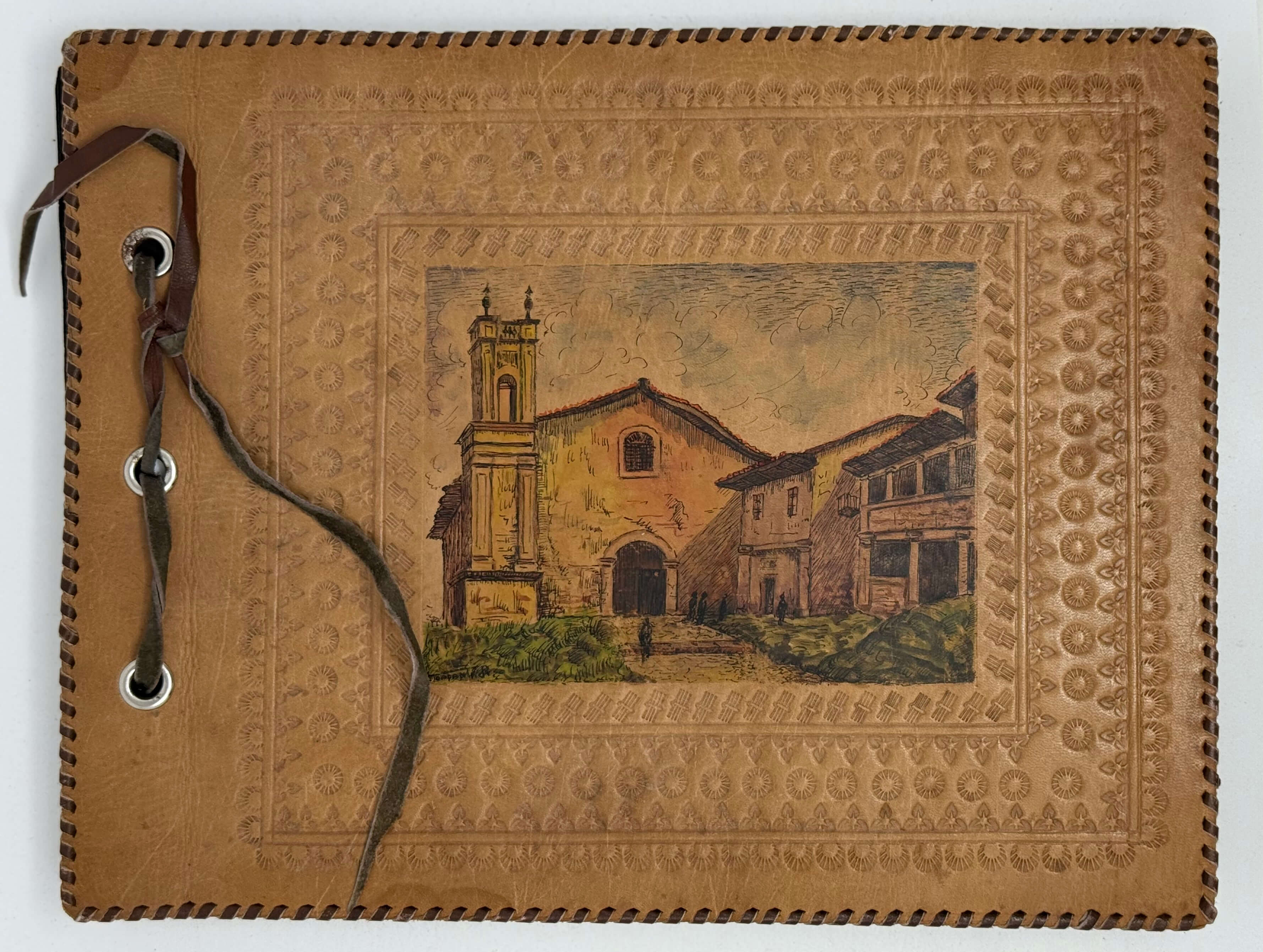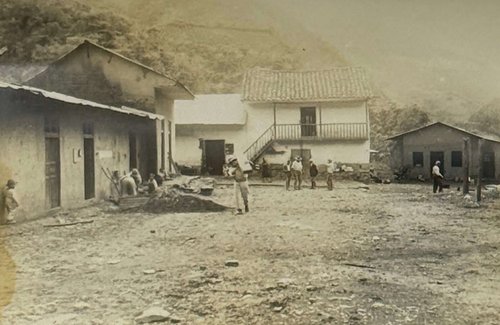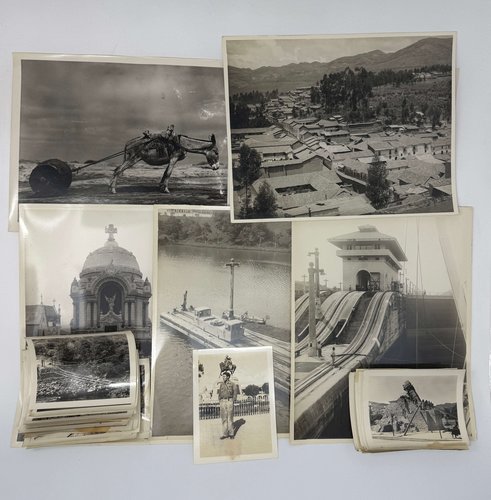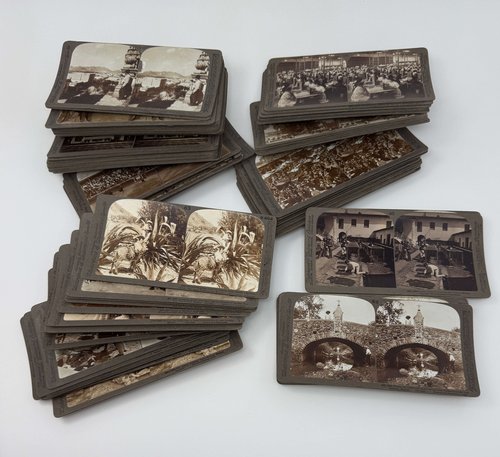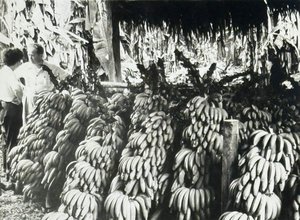
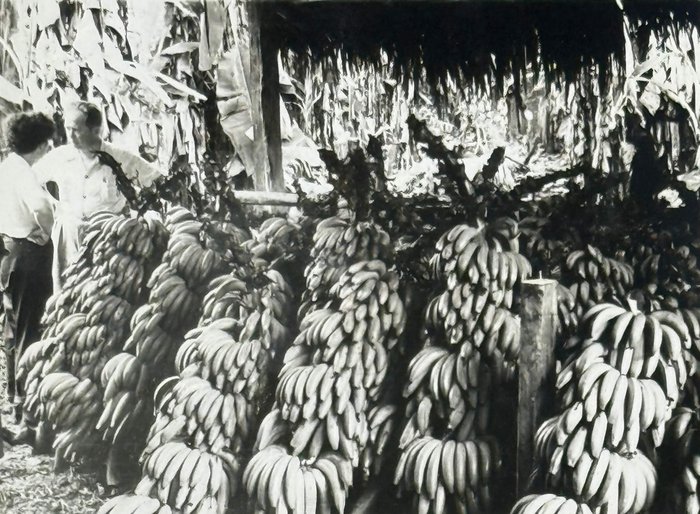
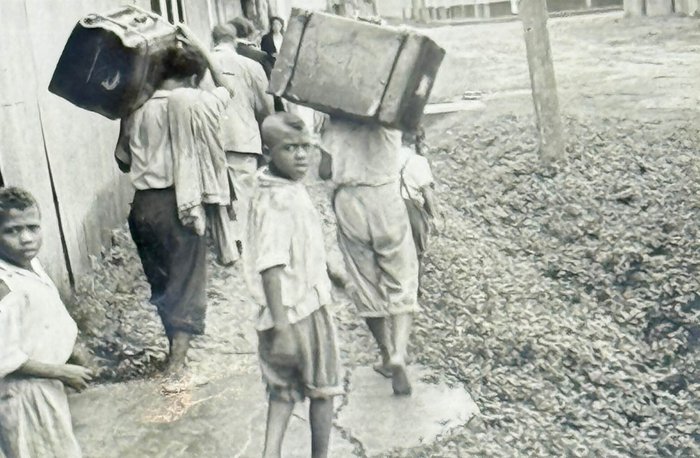
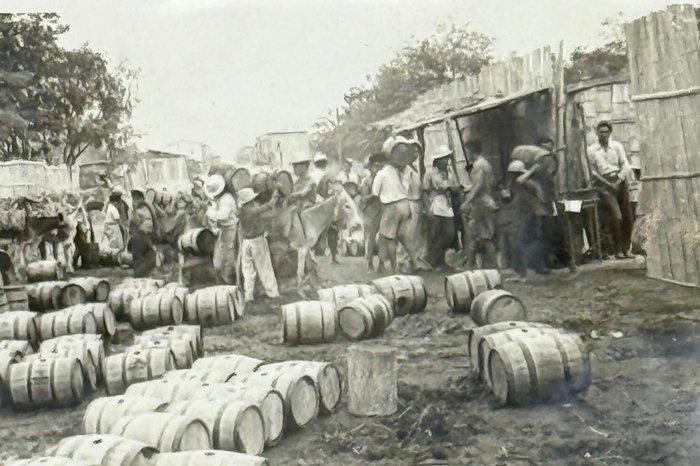
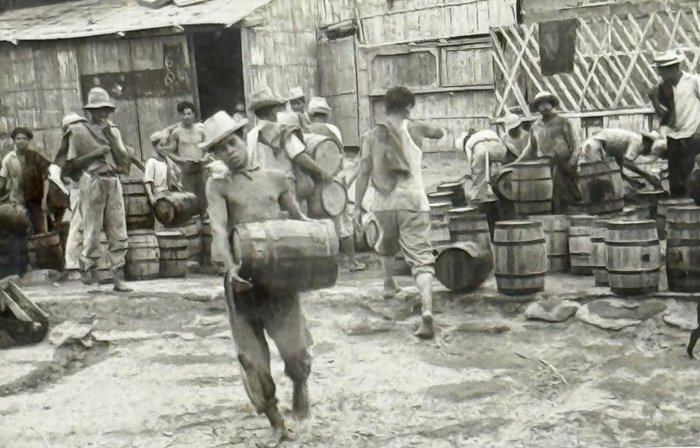
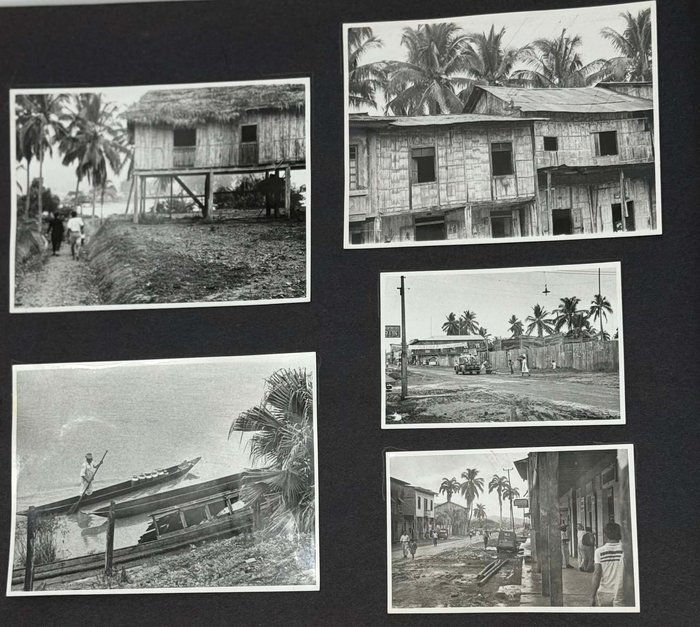
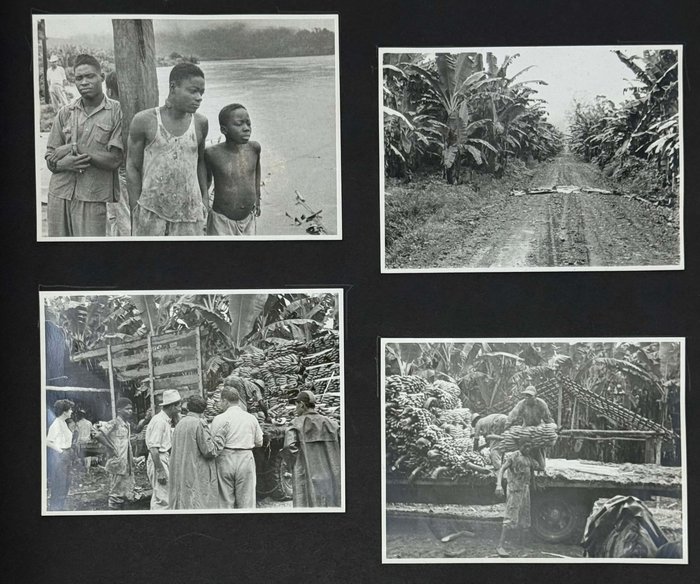
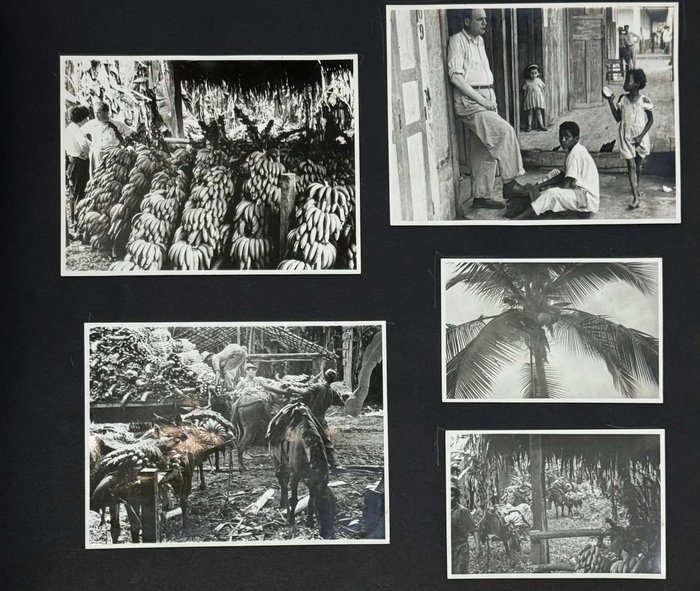
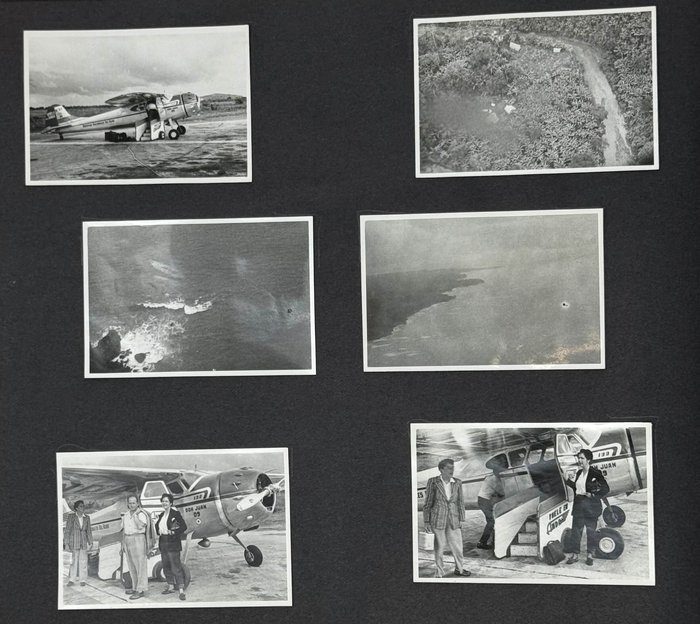
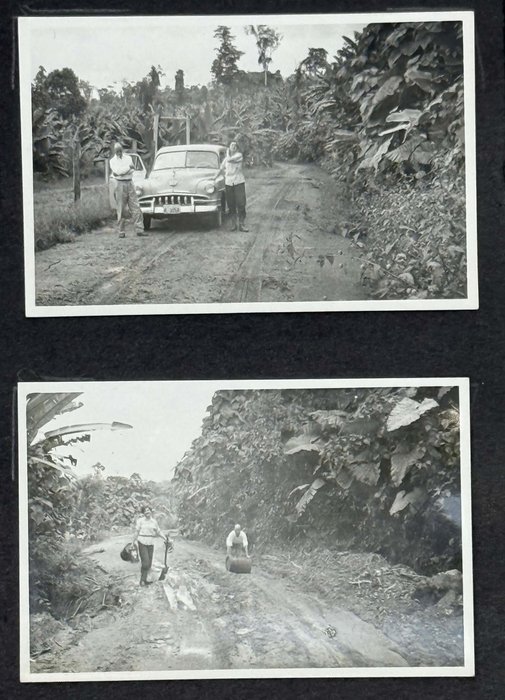

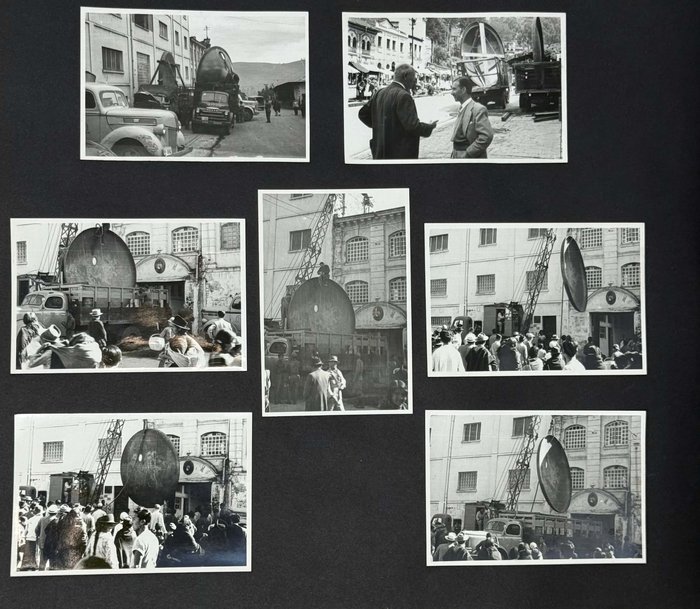


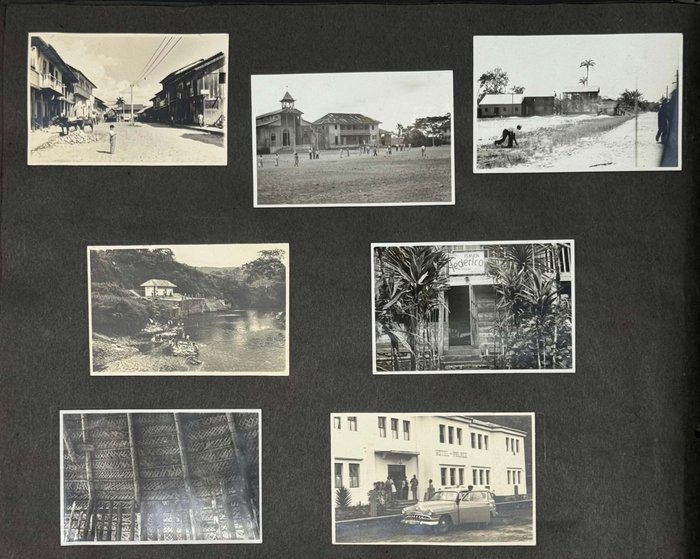
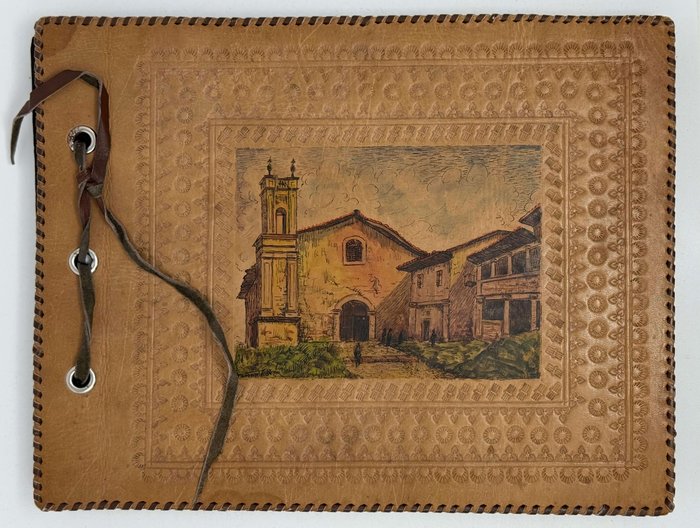
#PD57
Ca. 1950s
Oblong Folio album (ca. 25,5x32,5 cm or 10 x 13 in). 27 card stock leaves. With 394 mounted (mostly pasted on, but also mounted in corners) original gelatin silver photos, from ca. 8,5x11,5 cm (3 ¼ x 4 ½ in) to ca. 5,5x8,5 cm (2 ¼ x 3 ¼ in). One mount with a general pencil caption “Rio Napo,” two photos with period ink captions in German on verso. Period brown calf boards fastened with a string; elaborate blind-stamped ornaments on both boards; front board with a colour-stamped vignette. Three images previously removed from the album, otherwise a very good album with bright interesting photos.
Interesting extensive collection of original gelatin silver amateur photos of Ecuador, taken by Germans in the 1950s and illustrating the early years of the re-establishment of economic relations between Ecuador and the Federal Republic of Germany after WW2, possibly in the agriculture and beer brewing industry.
The album opens with photos of the arrival of a middle-aged travelling couple to Ecuador (an airfield with a plane of “Aerovias Ecuatorianas C.A.,” a boat trip along a river, disembarking from a dugout canoe, entering a riverside community, &c.). A series of images show the travellers at a banana plantation and local men loading banana bunches onto trucks. There are also images of the couple travelling on board a plane with the sign “Aerovias Nacionales del Agro (Vuele en Anda), Don Juan 09,” and several views taken from the plane. Four photos show the installation of water or irrigation pipes in the Ecuadorian countryside.
Over forty images document the transportation and installation of a tank, possibly for a brewery: scenes of the arrival of a river barge with wooden containers (with the signs “Quito, Ecuador, Guayaquil”), unpacking and loading equipment on trucks, driving over a bridge, mountainous countryside roads, arrival to an industrial facility, installation within a brick structure, and several portraits of workers. Three photos at the end of the album show the unloading of a piece of equipment; the sign next to the truck reads “Export, Süd-Amerika.”
The other photos show Ecuadorian cattle ranches, papaya plantations, coastal and riverside communities (one leaf has a manuscript caption “Rio Napo”), a pottery workshop, market stalls, “Hotel de Palace,” entrance to “Pension Federico,” snow-capped mountains (one is most likely Cotopaxi), scenes with Ecuadorian mule drivers, loaders with wooden casks, a show polisher, children at a Christmas street celebration, native species of mammals, birds and turtles, &c. Over a dozen images show a bullfight, most likely in Quito. There are also several scenes from a public ceremony with government officials.
Numerous photos portray Germans in Ecuador – while sightseeing, dining, attending parties and a wedding, and spending time with families and children; there are also views of the interior of their homes or rustic cottages. One photo portrays a female traveller posing in front of the entrance to “Handicraft/ Art-Workshop, Arturo Kiewe.” Apparently, it belonged to a Jewish merchant, Arthur Kiewe, who owned an art store in Berlin and fled Germany in 1939. Another close-up photo portrays the owner and his wife – likely Kiewe himself. The two photos with captions on verso show a family in Ambato and two Germans, apparently posing on the grounds of the “Campana” “Malzerei” (malthouse).
Overall an interesting, extensive collection of original gelatin silver photos of Ecuador in the 1950s.


